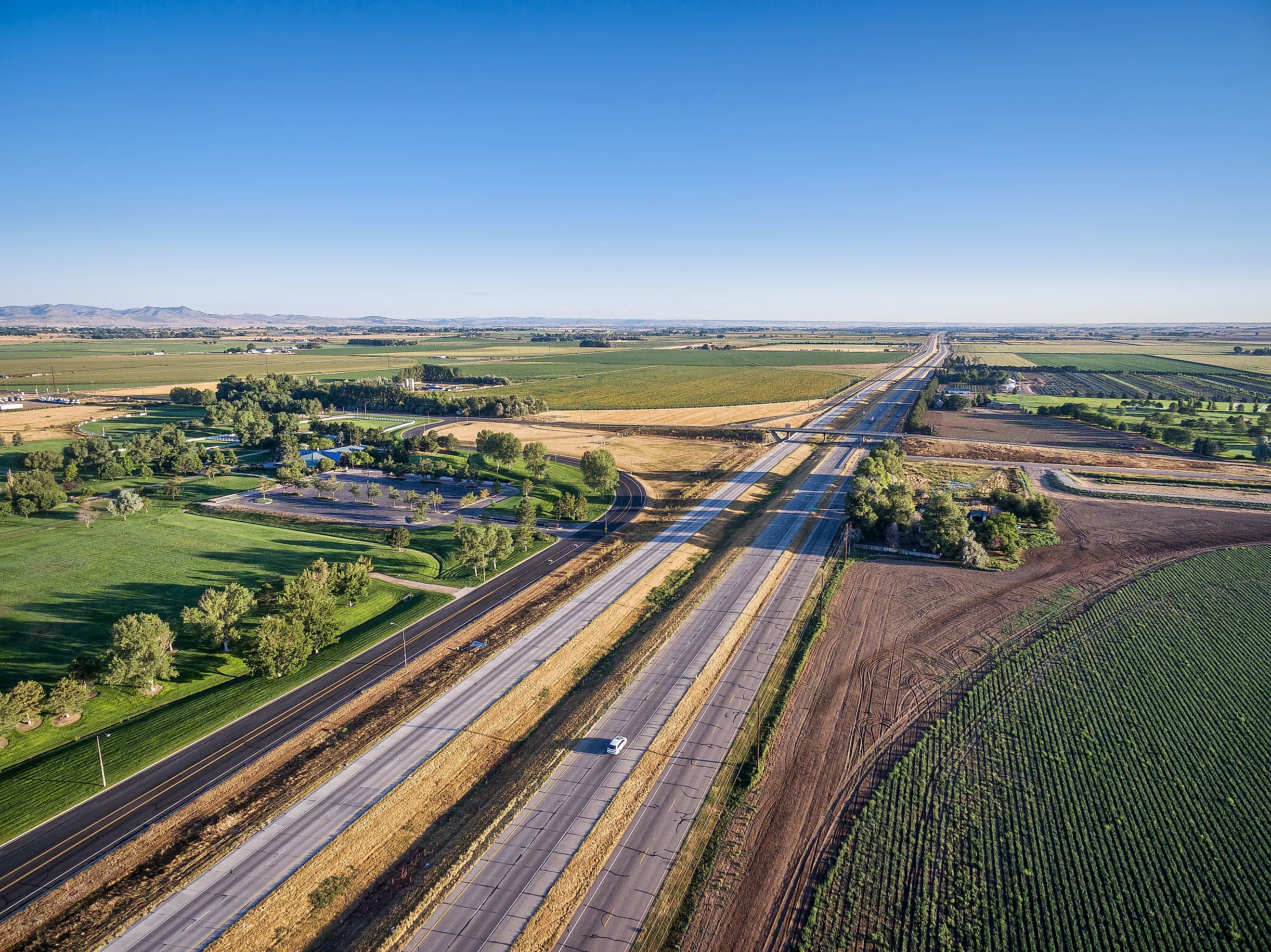
5 Most Rattlesnake Infested Areas in Colorado
Colorado isn’t just popular with visitors coming to see the spectacular Rocky Mountains, explore the bright lights of Denver, or check out the state’s quaint small towns. It is also pretty attractive to some scary serpents as well. The Centennial State is home to three species of rattlesnakes, the Prairie Rattlesnake, Crotalus viridis, the Midget Faded Rattlesnake, Crotalus concolor, and the Massasauga Rattlesnake, Sistrurus catenatus. All are venomous and should be treated with caution if you meet one when exploring the outdoors.
Prairie Rattlesnakes are found throughout Colorado, while Midget-Faded Rattlesnakes are typically seen in Mesa, Delta, and Garfield Counties. Massasauga Rattlesnakes are much less common and are a species ‘of special concern’ in Colorado thanks to their declining populations. They are mostly found in southeastern Colorado.
Rattlesnakes are not aggressive towards humans by nature. Generally, these creatures only strike when threatened, so if you keep your distance and leave the snake alone, you can enjoy catching a glimpse of these fascinating creatures in the wild and continue your Colorado vacation without incident.
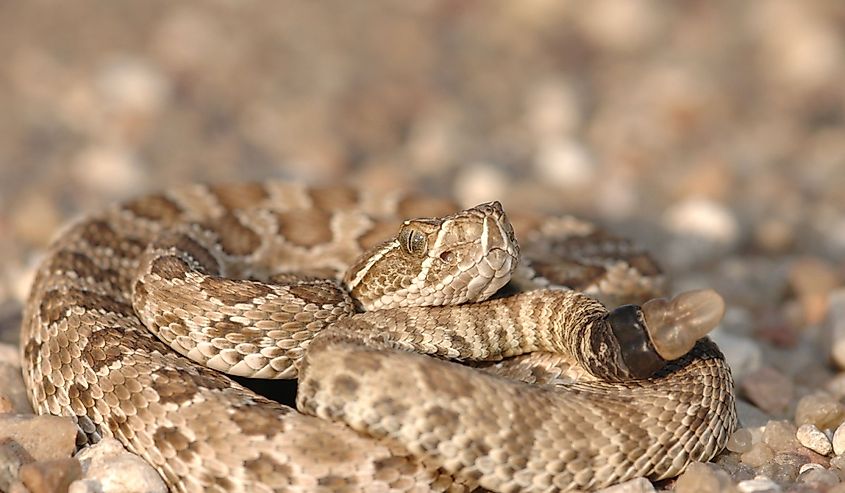
North Table Mountain Park
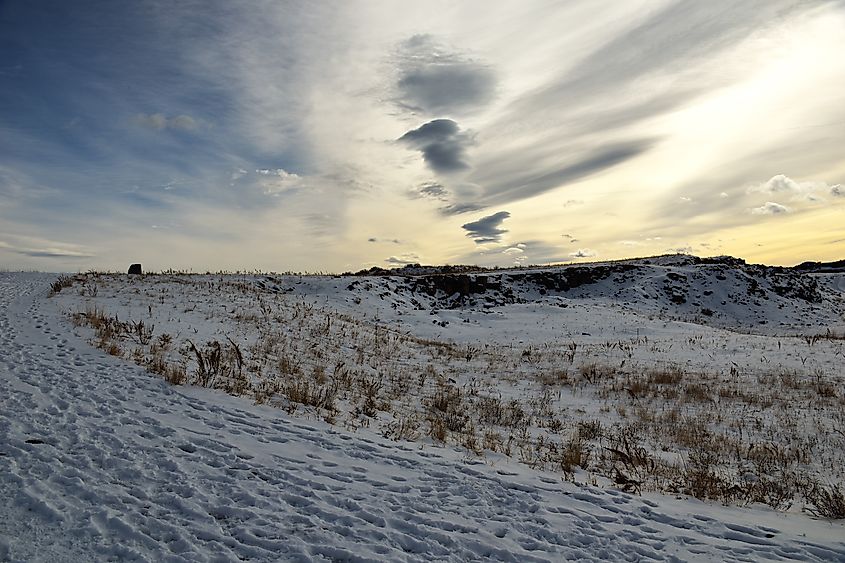
North Table Mountain Park in Jefferson County often hosts research studies on rattlesnakes. Prairie Rattlesnakes are found throughout the park, so be careful if you’re exploring its 15-mile network of hiking trails and rock climbing sites. Rattlesnakes are often seen near the trails in the spring and summer as they emerge from hibernation.
The park covers almost 2,000 acres near the town of Golden and is known for its stunning views from North Table Mountain and its sister peak, South Table Mountain; both were formed by lava flows around 60 million years ago.
Greater Fort Collins
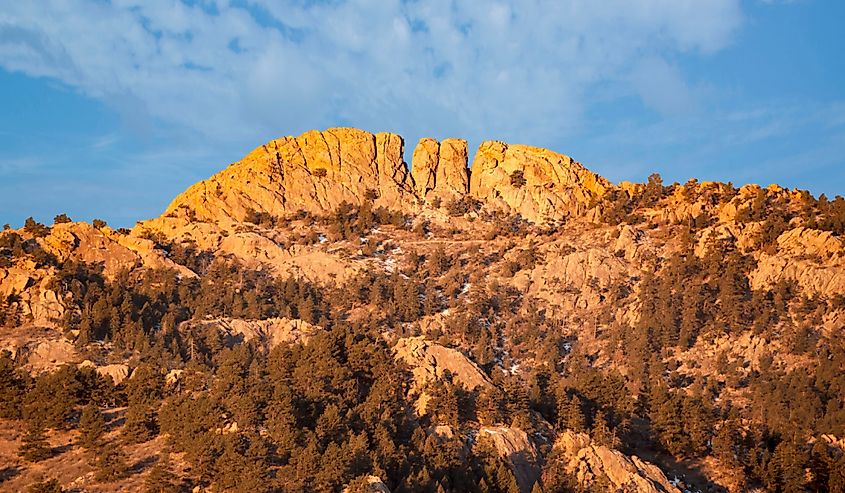
The rocky hills around Fort Collins are famous thanks to some slippery, reptilian residents. Researchers estimate there are thousands of snakes at a rattlesnake rookery, or den, outside of town. This became a news item in 2024 because of a live stream showing the nest's interior.
The area around Fort Collins is an ideal habitat for Prairie Rattlesnakes, which are found in grassland, sandhills, semi-desert shrubland, and woodland habitats up to 9,500 ft in elevation.
Garden of the Gods
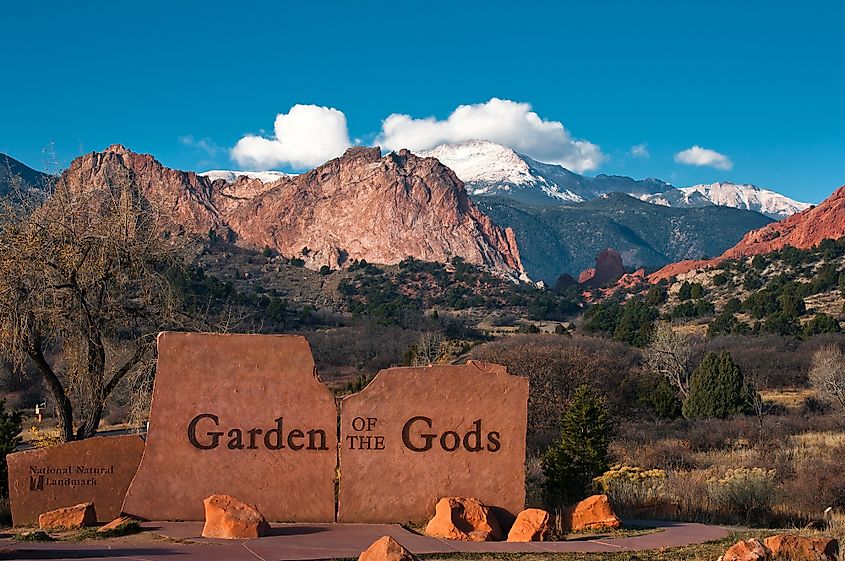
Garden of the Gods Park outside Colorado Springs is a National Natural Landmark also known as ‘the gateway to the Rockies’. This beautiful 480 acre park features stunning sandstone formations and views of nearby snow-capped Pike’s Peak. Popular with climbers, bikers, and hikers, there are lots of ways to enjoy the area — as long as you keep an eye out for rattlesnakes.
There have been reports of rattlesnake bites at the park so rangers warn visitors to stay vigilant on the trails and report any sightings. If you are bitten, stay calm, don’t apply a tourniquet as this can trap the venom in the wound, and seek medical attention immediately.
Ute Valley
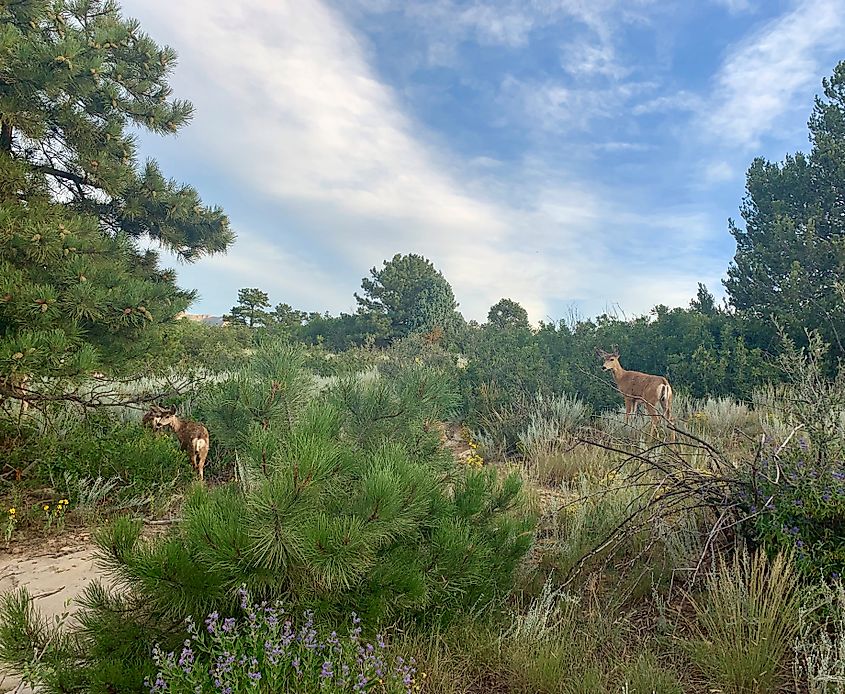
The lush landscape of the Ute Valley has plenty of attractive habitats for Prairie Rattlesnakes. During the summer, it is common to see the snakes basking on the trails of Ute Valley Park, where hikers can traverse a range of paths, including the aptly named Rattlesnake Ridge. A challenging hike, this loop takes you up to a thin, rocky trail with sweeping views over Pikes Peak, Pinon Valley, and Black Forest. Along with rattlesnakes, the park’s wildlife includes black bears, deer, and coyotes. Visitors to the park are required to stay on designated trails and keep pets on a leash at all times.
Rio Grande River
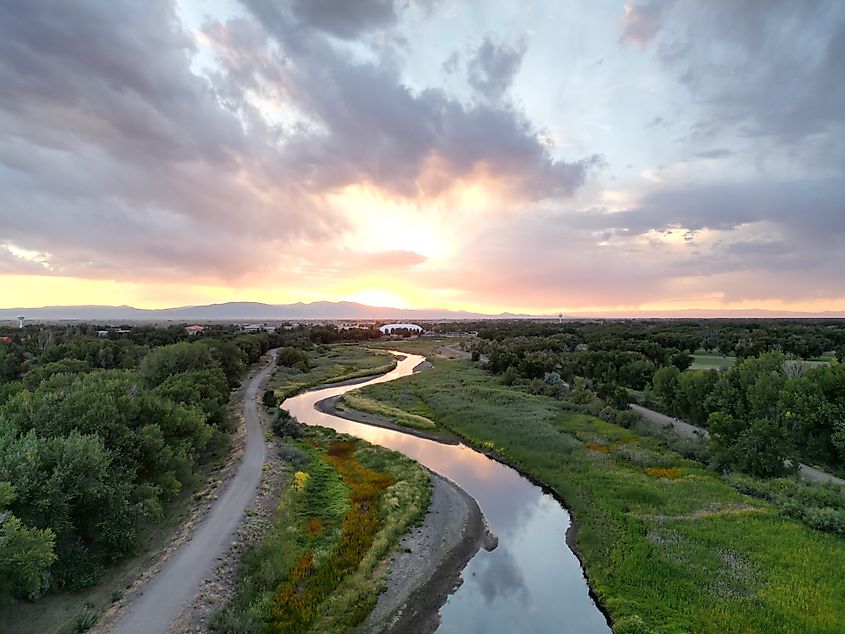
The Rio Grande River starts in the San Juan Mountains in southern Colorado and runs east and south through the state. Along the way, it passes through several Prairie Rattlesnake habitats, including rocky hillsides, grasslands, and drainage beds.
Popular recreation areas along the Rio Grande River in Colorado include the Alamosa Riparian Park, the Rio Grande National Forest, and the Alamosa Wildlife Refuge. If you’re exploring the outdoors in or near those areas, be mindful of where you step and be aware that the snakes like to burrow into secluded places such as leaf litter, rock piles, or wood piles so never reach into a crevice or a hole without checking what’s there!
Staying Safe Around Snakes
There are a lot of myths about snakes and it is important to separate fact from fiction. They may look frightening, but it is rare for snakes to bite people. They also benefit our ecosystems by eating the pests that destroy crops, and providing a food source in return for birds and other predators higher up the food chain.
Rattlesnakes are easily identified by their triangular head and the rattle at the end of their tail. If you see one, give it some room, and move slowly around it. If you hear the snake’s telltale rattle, freeze. If you don’t know where it is, you might accidentally move closer to it. When hiking, wear long trousers and leather boots and keep all pets on a leash. Rattlesnakes like to bask in the sun during the warmer months and are active in fall before hibernating for the winter.











